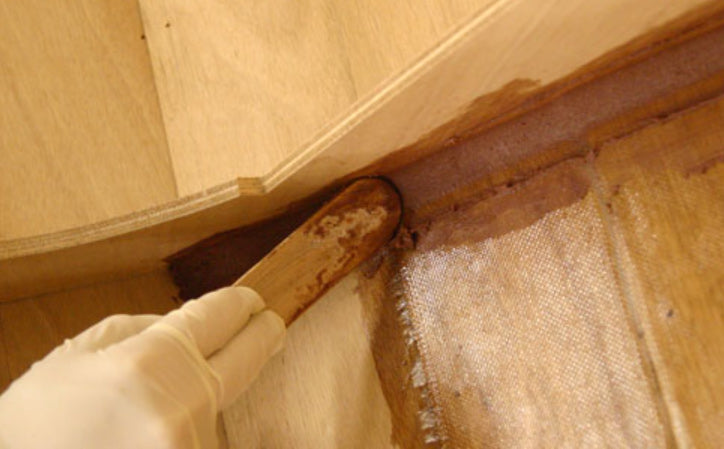
Fillets
Stitch and Glue Boatbuilding TipsAn epoxy fillet coves out the inside corner where two plywood panels meet. Applying fillets to join plywood panels in a boat is the "glue" part of "stitch-and-glue" construction; the process is messy but very easy, sort of like making mud pies. A neatly executed fillet (pronounced "fill it," not "fillay," as in a cleaned fish) improves strength, eases the application of fiberglass tape, and greatly enhances appearance.
Tools For Filleting
You'll need one or two simple tools to apply fillets to the seams of your boat. I go to an automotive store and buy cheap plastic spreaders or squeegees, the type used for spreading Bondo. I cut a 1-inch radius into one end, as shown in the sketch; this tool will do for all of the major seams in a boat. To make smaller fillets such as those that hold bulkheads in place, I cut a 1/2-inch radius in the end of a thin piece of plywood. This tool is also useful for reaching into the narrow ends of the boat.
Here are some cool filleting tools.

How Do I Mix Epoxy For Filleting?
The mixed epoxy needs to be thickened quite a lot so that the fillets don't sag and run. Too thick, though, and you'll have trouble getting a smooth fillet. Wood flour, such as that provided with our MAS epoxy kits, is an ideal thickener. Mix it in with the catalyzed epoxy a little at a time until you reach a peanut butter consistency. Adding a little Cab-o-Sil or Cell-o-Fill will make a smoother mixture.
Tips For Good Fillets

Get the thickened epoxy out of the pot and into the boat quickly; you don't have a lot of time once you've reached the ideal consistency. I walk down the boat scooping big blobs of thickened epoxy onto the seam every two feet or so. This gets the stuff where you need it -- in the boats. Once I have most of the stuff out of the mixing pot, I start smoothing it with my filleting tool.
A lot of the epoxy will be smeared out to either side of the squeegee as it plows along; you must scrape this stuff up with the flat side of your tool, as it makes for unpleasant and prolonged sanding once it dries.
Try to avoid touching up spots on a filleted seam once you've gotten it close to perfect. The curing epoxy will have stiffened and you may have trouble smoothing out the area to which you return. You should apply the fiberglass tape right onto the wet fillets. It's easy to mess up your carefully applied fillets while laying down the tape and saturating it with unthickened epoxy, so work carefully.